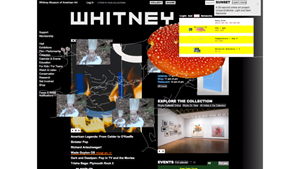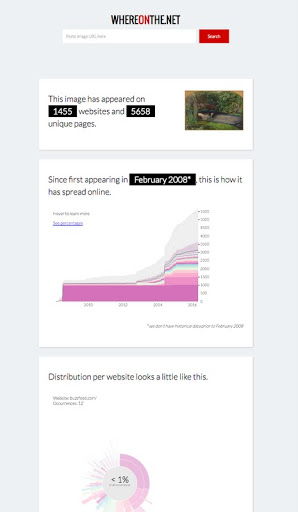
With the exponential advancement of new digital technologies, the arts are moving towards opening up digital and digitized heritage to the wider public, and making digital formats of content easily accessible to the wider public. ln 2013, Tate proposed a strategy to focus on digital solutions that promoted a broader public engagement of art. Whitney Museum’s Artport is available through their website and dedicated to showing, commissioning and archiving digital and Internet art. Initiatives like these demonstrate how new media now has a prominent and critical influence on our culture sectors.
With the exponential advancement of new digital technologies, the arts are moving towards opening up digital and digitized heritage to the wider public, and making digital formats of content easily accessible to the wider public. ln 2013, Tate proposed a strategy to focus on digital solutions that promoted a broader public engagement of art. Today anyone can access the entire Tate collection online. Whitney Museum’s Artport is available through their website and dedicated to showing, commissioning and archiving digital and Internet art. Initiatives like these demonstrate how new media now has a prominent and critical influence on our culture sectors.

URSULA ENLICHER, Screenshot of Light and Dark Networks from Whitney Museum of American Art's Sunrise/Sunset series, 2012.
This shift to digital in larger institutions also impacts ways audiences are now engaging with digital art. Mousse Magazine’s vdrome.org is a curated channel for viewing video work outside of traditional white cube spaces to promote access to a wider public. More artists see the benefit of sharing their work online while accessibility to information on the Internet and practices of appropriation are often explored in new media art practices. Once the artist’s work goes online, they are confronted with an issue of access versus ownership.
Blocking access to information online has proved to be a difficult task. Bits flow. In the past, digital rights management (DRM) scheme like watermarking or encryption that restricted access trying to defy the physics of bits were almost always unsuccessful. For the artist the question that still lingers is: How can an artist maintain the rights over their digital work if it’s already been published online?
Digital artists publishing their work online need immutable attribution and transparency. In a medium where virality may increase the value of work, gaining transparency into where work is spreading and how it’s being used is significant to maintaining the rights over the work.
Tools exist today that reconcile the physics of bits and utilize technology to make the Internet work for artists, not against them. WhereOnTheNet allows artists to trace where work spreads online. By using an image similarity match method, WhereOnTheNet crawls the web and then displays all occurrences and unique pages the work has appeared, giving artists transparency into where and how copies are being used online. Transparency into the provenance or dissemination of copies is another way artists can assess the impact their work and understand how it exists outside traditional art world models to their benefit.

Screenshot of WhereOnTheNet results for SIR JOHN EVERETT MILLAIS, Ophelia, 1851–2.
For collectors however, going digital is still a concern. The art market is used to rarity, inaccessibility and uniqueness of the artwork. How can a collector prove authenticity when obtaining a digital work that has already been shared online? The concept of editioning digital art is hard to grasp because any digital file can be easily replicated and instantly shared. According to experts from Fine Arts Expert Institute in Geneva, nearly half of the artworks in circulation in the physical art world are fake, a staggering number. For digital work, a much easier medium to reproduce, the problem becomes even harder to identify and tackle.
Distinguishing a copy of a work from an edition is the key to collecting digital art. When a collector purchases a work, physical or digital, they will receive a Certificate of Authenticity (COA), confirming that they are the rightful owner of the work or edition. A COA for digital art proves ownership rights over an edition, not the copy of a file. At the point of creation, the artist should determine the terms of use for their digital intellectual property and for every edition. Once sold, the collector owns the rights to that work and has responsibility over maintaining the edition.

DAN PERJOVSCHI, Currency, 2014. Courtesy of Masha McConaghy Collection
ascribe uses blockchain technology to provide tools for artists and collectors to register, archive, transfer and track provenance of digital art. Solutions like ascribe hone in on the importance of provenance and copyright to prove authenticity of digital content.
A blockchain is a ledger that records digital transactions. Blockchain technology is trusted because it functions as a distributed consensus - meaning there isn’t one centralized point of input and can only be updated in accordance with its contributors. Once information is stored on a blockchain it is there forever and can never be edited.
Curator and co-founder of ascribe, Masha McConaghy sees blockchain technology as a solution to change the way artists are compensated and how collectors own authentic digital content with clear ownership and usage rights. By using blockchain to store this information, anyone can verify ownership of the work, distinguish work from unverified digital copies and trace the origins back to the artist so collectors can buy pieces with confidence of authenticity.
“Digital art challenges the definition of ownership,” McConaghy states. “When an artist creates a work, it is protected by copyright. By using a combination of copyright and contract law, it’s possible to transfer ownership and usage rights. This hasn’t been widely used yet however because it’s been too hard to use. But imagine if it was easy to use, and backed by blockchain?”

HARM VAN DEN DORPEL, piece detail of Event Listeners, 2015. Additional note: MAK – Austrian Museum of Applied Arts / Contemporary Art is the first museum to acquire a work that has been digitally authenticated through ascribe.io and bought with bitcoin through the online gallery cointemporary.com
There has been no way for collectors to ensure the authenticity of digital editions apart from putting the trust into the words of the gallery or an artist. For authenticity of each digital edition, an unbreakable bond between an artist and their work is essential. Art on the blockchain can verify that bond with secure and transparent tracking of ownership provenance. Establishing digital editions using blockchain permits a digital work to retain its value, and collectors are able to clearly see the provenance of each edition.
The shift to digital is critical moment to rethink and reshape traditional models of collecting, showing and retaining value of work for artists and collectors. The provenance of digital or digitized work should not only represent the ownership history but also acknowledge the digital footprint of an art work.

ArtDependence Magazine is an international magazine covering all spheres of contemporary art, as well as modern and classical art.
ArtDependence features the latest art news, highlighting interviews with today’s most influential artists, galleries, curators, collectors, fair directors and individuals at the axis of the arts.
The magazine also covers series of articles and reviews on critical art events, new publications and other foremost happenings in the art world.
If you would like to submit events or editorial content to ArtDependence Magazine, please feel free to reach the magazine via the contact page.